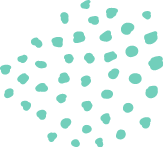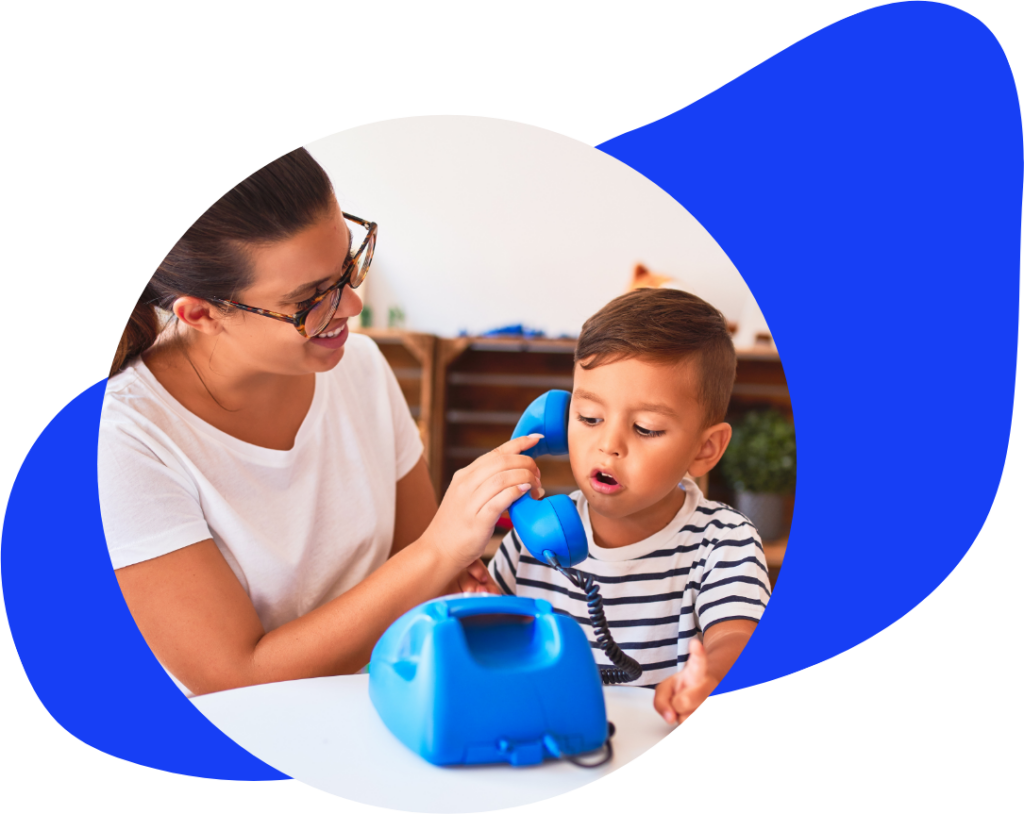What is Autism?
Autism, or autism spectrum disorder (ASD), refers to a broad range of conditions characterized by challenges with social skills, repetitive behaviors, speech, and nonverbal communication.
According to the Centers for Disease Control, autism affects an estimated 1 in 44 children in the United States today.

DSM-V definition of autism spectrum disorder
- Persistent deficits in social communication and social interaction across multiple contexts, as manifested by the following, currently or by history (examples are illustrative, not exhaustive; see text):
- Deficits in social-emotional reciprocity, ranging, for example, from abnormal social approach and failure of normal back-and-forth conversation; to reduced sharing of interests, emotions, or affect; to failure to initiate or respond to social interactions.
- Deficits in nonverbal communicative behaviors used for social interaction, ranging, for example, from poorly integrated verbal and nonverbal communication; to abnormalities in eye contact and body language or deficits in understanding and use of gestures; to a total lack of facial expressions and nonverbal communication.
- Deficits in developing, maintaining, and understand relationships, ranging, for example, from difficulties adjusting behavior to suit various social contexts; to difficulties in sharing imaginative play or in making friends; to absence of interest in peers.
Specify current severity:
Severity is based on social communication impairments and restricted, repetitive patterns of behavior.
- Restricted, repetitive patterns of behavior, interests, or activities, as manifested by at least two of the following, currently or by history (examples are illustrative, not exhaustive; see text):
- Stereotyped or repetitive motor movements, use of objects, or speech (e.g., simple motor stereotypes, lining up toys or flipping objects, echolalia, idiosyncratic phrases).
- Insistence on sameness, inflexible adherence to routines, or ritualized patterns of verbal or nonverbal behavior (e.g., extreme distress at small changes, difficulties with transitions, rigid thinking patterns, greeting rituals, need to take same route or eat same food every day).
- Highly restricted, fixated interests that are abnormal in intensity or focus (e.g., strong attachment to or preoccupation with unusual objects, excessively circumscribed or perseverative interests).
- Hyper- or hyperreactivity to sensory input or unusual interest in sensory aspects of the environment (e.g., apparent indifference to pain/temperature, adverse response to specific sounds or textures, excessive smelling or touching of objects, visual fascination with lights or movement).
Visit https://www.cdc.gov/ncbddd/autism/hcp-dsm.html for more information
ABA Glossary
A
Applied Behavior Analysis (ABA) is a therapy based on the science of learning and behavior.
ABA therapy applies our understanding of how behavior works to real situations. The goal is to increase behaviors that are helpful and decrease behaviors that are harmful or affect learning.
For a more thorough explanation, see the ABA page of Autism Speaks.
A professional who provides ABA therapy directly with the client. At Eleos, an RBT is an ABA therapist. Other similar names for this role can include ABA technician, ABA teacher, ABA tutor, Behavior Interventionist, and Behavior instructor.
A strategy used to determine the function of a behavior in order to identify a function-based treatment intervention. Sometimes referred to as The Three Term Contingency. A= Antecedent: What is happening right before the behavior occurred, B= Behavior: the observable and measurable movement the individual is doing, C=consequence: what happened immediately after the behavior.
Intentionally harming another person. Examples: hitting, biting, kicking, throwing objects at others, etc.
Autism, or autism spectrum disorder (ASD), refers to a broad range of conditions characterized by challenges with social skills, repetitive behaviors, speech, and nonverbal communication. https://www.autismspeaks.org/what-autism
B
A certification that requires a graduate level degree in applied behavior analysis. They are authorized to oversee and manage ABA programs. Some BCBAs conduct research, teach, and provide other services in the community.
Something a person does that is observable and measurable. For example, crying can be observed and measured (duration) but feeling sad is not an observable behavior.
A written document that outlines what interventions will be in place in order to change behavior.
C
Based on a task analysis, in which individual steps are recognized as requirements for task mastery. Chaining breaks a task down into small steps and then teaches each step within the sequence by itself.
Examples:
- Brushing teeth: First teach getting toothbrush wet, then apply toothpaste, then putting toothbrush in mouth, etc.
- Putting on a shirt: First teach pulling down the shirt from the waist, then from the chest, then putting one arm in, etc.
Something that happens after a behavior occurs that either increases or decreases the likelihood of that behavior happening again. Examples include reinforcement or punishment.
D
A cycle of behaviorally based and systematic instruction that breaks down several skills and trains them in quick succession, providing reinforcement along the way.
The Diagnostic and Statistical Manual of Mental Disorders is used to help guide health care professionals to the diagnosis of mental disorders.
E
Imitating sound. The ability to echo sounds and words is essential to learning to speak a full range of words. It helps expand your child’s verbal behavior. Example: You ask someone what their name is and immediately repeat it back to them.
Meaningless repeating of another person’s spoken words. Example: You tell your child to say, “Thank you,” and they say, “Say thank you.”
Walking or running away from a caregiver and/or out of a designated area such as the home.
Communicating thought and feelings through vocal language, signs, and/or symbols.
No longer reinforcing a behavior that was previously reinforced. For example, if your child starts to cry and you turn on the T.V. to get them to stop, but then you stop turning on the T.V. each time they cry, you have placed crying on extinction.
The learner’s behavior temporarily increases when the reinforcement for the behavior is removed.
F
A scientific and systematic way to determine the function of a behavior. The client is given either escape from demands, attention, a tangible item, or nothing, contingent on the undesired behavior in separate sessions. The data is then used to identify which condition (attention, escape, tangible, sensory/automatic) produced the highest rate of the undesired behavior.
A scientific way to hypothesize the function of a behavior. This assessment uses direct and indirect methods. Some include functional analysis, observation of the behavior, interviews with caregivers, reviewing data.
The environmental factor that is maintaining the behavior. Examples:
Function | What it does | When does it occur | Example |
Attention | It provides social interaction (positive or negative) | When the person is seeking social interaction | A child throws a toy across the room and looks over to see if you were watching them and you give them “the look.” |
Escape | It provides escape from an undesired activity or situation | When the person does not want to engage in the current activity or demand | A child is asked to complete a math problem. They throw their pencil and no longer are made to complete the problem. |
Tangible | It provides access to a preferred item | When the person wants something, they do not currently have | A child wants a cookie. The child begins screaming until they are provided the cookie. Once it is provided, they stop. |
Sensory | It provides sensory input (it feels good) | This can occur anytime. It may be more likely to occur when the person is anxious or upset. | A child has their favorite show on, eating their favorite snack, they have your attention, but they are continuing to chew on their shirt. |
A procedure used to teach a replacement behavior to undesired/harmful behaviors such as aggression, non-compliance, elopement, etc. When a child is engaging in these behaviors, they are seeking a type of reinforcement. FCT is designed to teach them another way to obtain the same reinforcement, but in a more appropriate way.
Example: A child hits their parent when they want attention. They are then taught to hand over a picture card that says “attention” when they want attention instead of hitting.
The form of function communication (picture cards, vocal language, signs, etc.) depends on the individual child and what works for them.
Movements that require using small muscles in hands and wrist. Some examples include making a peace sign, cutting with scissors, stringing beads, etc.
G
Taking skills learned in one environment and being able to apply them in a different environment. Example: A child is taught to ask for help at home and is then able to ask for help at school.
Movements that use larger muscles in your torso, arms, and legs. Some examples include jumping, catching a ball, balancing, etc.
I
An individualized plan that outlines specific supports that will be in place to ensure a child is receiving the proper instruction in order to thrive in the school setting.
The strategy that will be used to change behavior.
Example: You place screaming on extinction and teach the child to request for a specific item using a sign instead of screaming.
Verbal behavior that is under the control of someone else’s verbal behavior.
Example: You ask your child what they are doing, and they say “playing.” Your child would not have said “playing” unless you asked them the original question.
M
N
A method that uses the child’s natural environment to teach and generalize skills.
Example: You’re teaching the child animal sounds and while reading their favorite book, you point to all the animals and ask them what sound they make.
P
Repeating words, songs, phrases over and over (different from Echolalia or stimming) This may or may not be automatically maintained.
Example: Your child repeats “Blippi” over and over again until your turn on Blippi.
Assistance or a cue to help the learner respond correctly.
Example: You ask your child to turn on the water and they don’t. You then use a partial physical prompt by gently nudging their elbow towards the sink.
Something that decreases the likelihood of the behavior occurring again. What may be punishing to one person, may not be punishing to the next.
Example: Your child does not like being yelled at so when they jump on the bed, you provide a reprimand and they do not jump again.
R
Responding to another person’s verbal behavior, such as following directions.
Example: You ask your child to put their dish in the sink and they understand they are to put their dishes in the sink.
A behavior that serves as a substitute for an undesired behavior.
Example: Your child swipes their homework off the table because they want to escape from the situation. A replacement behavior would be asking for a break or to be all done instead of swiping.
Something that increases the likelihood of a behavior occurring again. What may be reinforcing to one person, may not be reinforcing to another person. Also, just because an item is preferred, does not mean that it serves as a reinforcer, although it may have the potential to.
Example: Your child sits at the table the entire time during their meal so you give them a piece of cake at the end of the meal.
S
Using a reinforcer so much that it is no longer effective.
Example: Your child earns a chip each time they engage in a certain behavior. They have received 50 chips throughout the day. They are no longer motivated to engage in the behavior because they no longer want more chips.
An action that someone does that inflicts harm to their own body. Examples include hitting their head with their hand, scratches themselves, biting themselves, etc.
Motor or vocal behaviors that often occur repetitively. These behaviors are maintained by automatic reinforcement. They sometimes occur more often when a person’s emotions are heightened such as being excited, anxious, or upset.
T
Labeling something.
Examples: you smell cake baking and say, “that smells like cake!” or your child sees a block and says “block.”
Something a person is doing that is observable and measurable that you are attempting to either increase or decrease. There can be multiple target behaviors within a behavior intervention plan.
Example: If you have FCT in place because your child runs away when they want to be done an activity, the target behavior is running away.
V
A method of teaching language that focuses on the language’s function.
Example: teaching a child to say “car” when they want their toy car while also teaching them if you hold up a toy car and say, “what is it?” they say “car.”
Verbal language can be any form of communication such as signs, spoken language, picture cards etc.
Communicating with spoken words.







